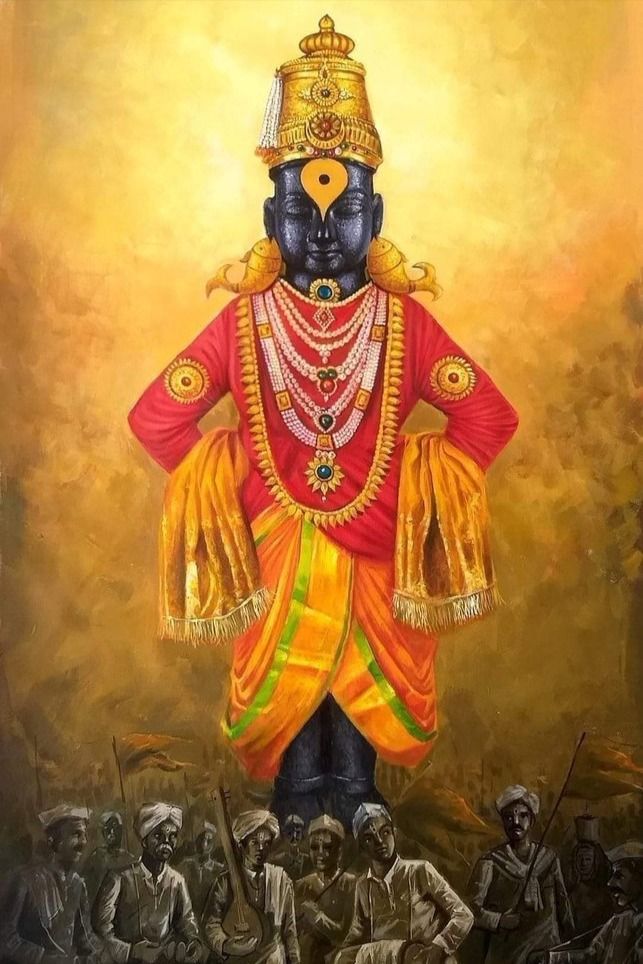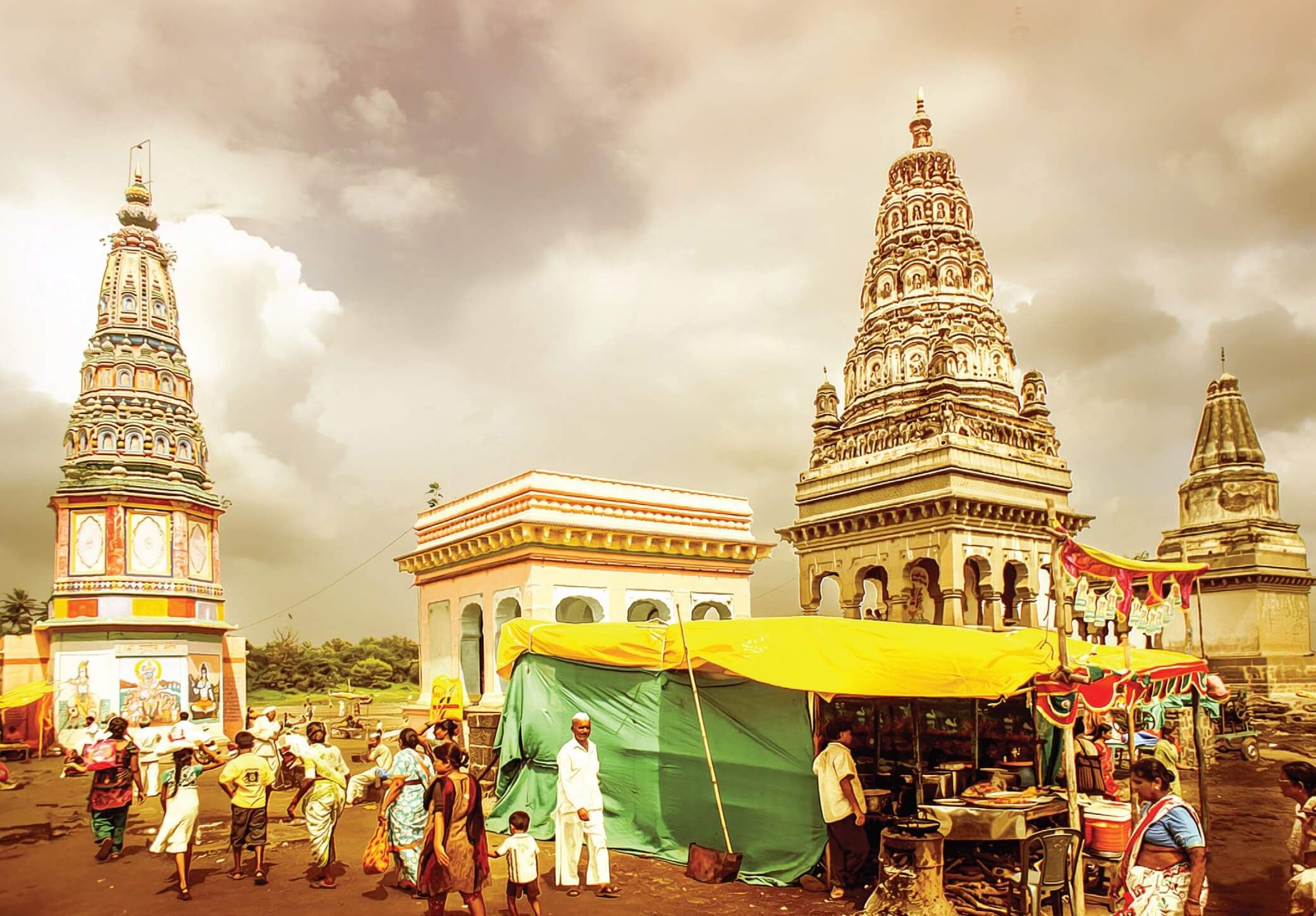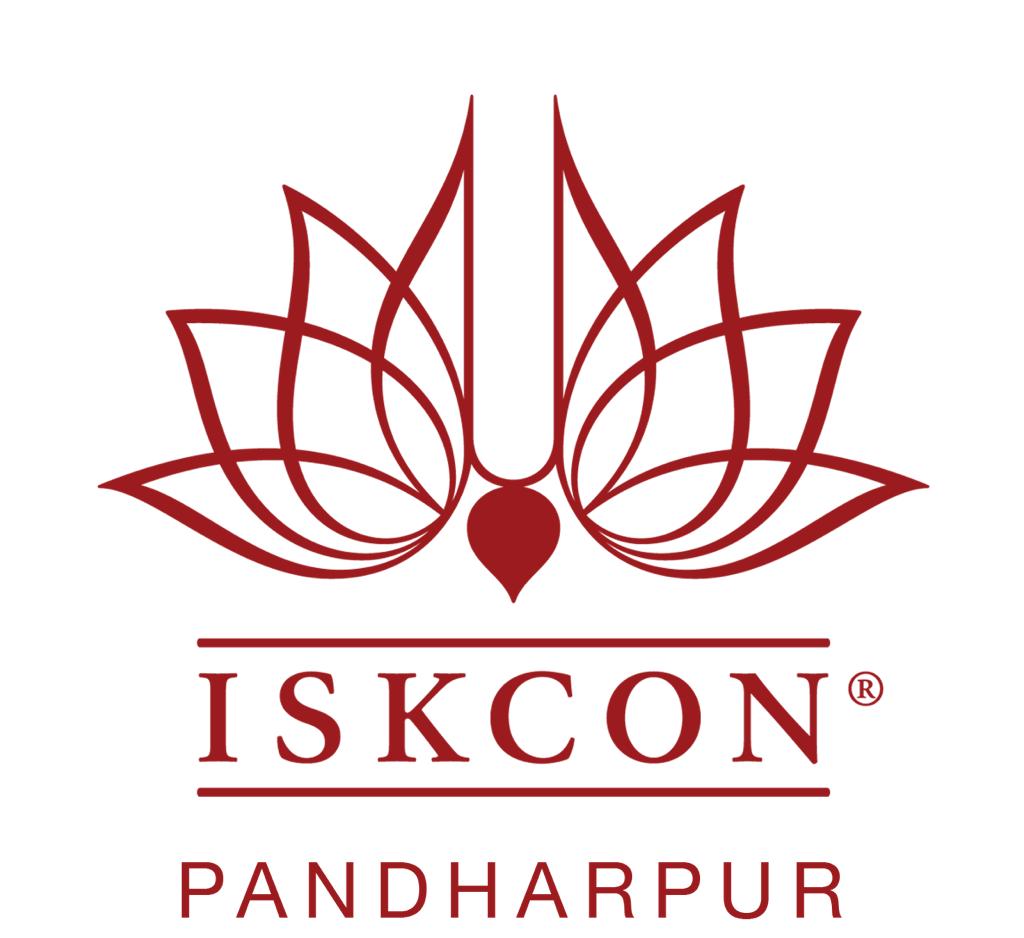Pandharpur – Maharashtra’s Spiritual Capital

Pandharpur is Maharashtra’s spiritual capital. The image of Lord Vitthala, with His hands on His waist, standing on a brick, waiting for His devotee, is ingrained in the consciousness of most Maharashtrians. Every year for centuries now, thousands upon thousands of pilgrims from villages all over Maharashtra and from Gujarat, Karnataka, and Andhra Pradesh, walk to Pandharpur with unflinching faith in Lord Vitthala’s protection as an offering of devotion. During their love-walk (vari), these varkaris immerse themselves in remembering the Lord and chanting His holy names, playing musical instruments like karatalas (hand cymbals) and mrdangas or other drums to accompany their singing. Leading up to the Asadha Sukla and Kartika Sukla Ekadashis, devotees walk 15–20 days to take darshana of their Lord Vitthala, who is always eagerly waiting for them. No one seems to mind that approximately a hundred thousand others are vying for their Lord’s darshana too.

Pandharpur is one of the most pious places in India revered with steeped devotion to Lord Sri Krishna, who is also locally known as “Vitthal” or “Vithoba”. It is the spiritual capital of Maharashtra. Padma Purana and Skanda Purana describe that Lord Krishna came to Pandharpur in search of Rukmini Devi, when she became upset from Krishna while they were in Dwarka. Rukmini departed for the forest of Dindirvana, near Pandharpur.
At Pandharpur, the most amazing pastime with Lord Krishna’s great devotee Pundalik took place. Pundalik gave a brick to stand, and asked Lord to wait as he was serving his parents. As Lord stood, He kept His lotus hands on His hips, waiting for Pundarika to return. While He was waiting, Rukmini, having forgotten her distress, came from Dindirvana and re-joined Him. Both of Them stayed in Pandharpur in this deity form. To this day the Lord stands on the same brick with hands on hips, but now He’s waiting for all His devotees to come see Him. The word “Vitthala” is derived from the Marathi word “Vit”, meaning brick, and “thala” means standing. This is why Lord Krishna is called as “Vitthala” in Pandharpur. While waiting, the Lord seems to tell the devotees, “Do not fear. For those who have surrendered unto Me, I have reduced the depth of the ocean of material suffering. See, it is only this deep.” Lord indicates the shallowness of the ocean by placing His hands on His hips.
Pundalik, in his previous life was the famous king Mucukunda, who is mentioned in Srimad-Bhagavatam to be blessed to sleep for long in a secluded cave. The brick given by Pundalik to Lord Krishna is not an ordinary brick, but King Indra himself. Long ago there was a demon named Vritrasura who was killed by Indra’s trick. While dying the demon cursed him to become a brick. However, Indra was told that he will be expelled from this curse when Supreme Lord Krishna will stand on the brick. So Indra was forced to accept the brick body. As a brick, Indra had got good fortune of being in the house of Pundalik. It was this brick which Pundalik gave to Lord to stand on. As a result Indra was free from the curse. In Pandharpur, the Lord is worshipped as Sri Vitthala. His devotees also fondly call Him Vithobha or Panduranga. Sant Tukarama, a stalwart devotee of Lord Krishna always referred Pandharpur as “Bhu-Vaikuntha”.
Pandharpur is non-different from the spiritual world as is evident from numerous references in the Puranas. Lord Shiva describes the glories of Pandharpur Dham to mother Parvati in the Skanda purana, and to Narada Muni in the Padmapurana. At one instance Lord Shiva is telling Narada, “Shri Pandhari pilgrim is the most sacred among all, in all rivers the holiest river is the Chandrabhaga, in all Lords Shri Vitthal is the best and, in all devotees, Pundalik is the best.
Padma Purana 32.44
ksetresu tirthesvatha daivatesu
bhaktesu sarvesv iha vai garistham
sri pundarikam kila candrabhaga
sri vitthalaste muni pundarikah
“The best holy place, holy waters, deity, and devotee are Pandharpur, the Chandrabhaga, Lord Vitthala, and Pundalika respectively.”
According to a story in Pandurang Mahatma in Padma Purana, the lord came to give Darshan to devotee Pundalik engaged in serving his parents. On being asked for a benediction by the Lord, Pundalik requested the lord to stay there and give Darshan to everyone. Such is the enormous magnanimity of the pure devotees! Purana briefly describe why the Lord journeyed to Pandharpur and why He stays there in this form.
Once Srimati Radharani, Lord Krsna’s consort in the village of Vrndavana, visited Dvaraka, where Lord Krsna lived as a king. At that time, Rukmini Devi, Lord Krsna’s queen, noticed that Krsna was dealing more intimately with Radharani than He had ever done with her. Upset, she departed for the forest of Dindirvana, near Pandharpur.
Lord Krsna followed Rukmini to apologize, but His apology left her unmoved. So the Lord moved on to Pandharpur to visit one of His devotees, Bhakta Pundarika, now popularly known in Maharashtra as Pundalika.When the Lord reached Pundarika’s asrama, Pundarika was serving his elderly parents.So Pundarika gave the Lord a seat of brick and asked the Lord to wait.The Lord did as told.He stood, lotus hands on His hips, waiting for Pundarika to return.While He was waiting, Rukmini, having forgotten her distress, came from Dindirvana and rejoined Him.Both of Them stayed in Pandharpur in Deity form.To this day the Lord stands on the same brick, but now He’s waiting for all His devotees to come see Him.
While waiting, the Lord seems to tell the devotees, “Do not fear. For those who have surrendered unto Me, I have reduced the depth of the ocean of material suffering. See, it is only this deep.”He indicates the shallowness of the ocean by placing His hands on His hips.
Elegantly dressed in yellow and other colors, Lord Vitthala wears around His neck a vaijayanti garland and tulasi, whose aroma permeates the darsana hall and the surrounding area. His right hand holds a lotus flower and His left a conchshell. On His chest He bears the mark of Bhrgu’s foot. His ears are decorated with shark-shaped earrings, and on His forehead beneath His crown is a broad mark of tilaka.
Pandharpur fits all the above definitions of a dhama. Lord Krishna, the emperor of Dvaraka, once came here in search of His beloved wife Rukmini, who was upset. While here, He remembered His great devotee Pundalika. On reaching Pundalika’s house, He saw Pundalika serving His Vaishnava parents. Pundalika, although overjoyed to see the Lord personally at his door, asked Him to wait on a brick while he finished serving his parents. The Lord, His heart overflowing with love for His devotee, patiently stood on the brick, His hands on His waist, waiting for His devotee to attend to Him. Pundalika later requested the Lord to stay in Pandharpur forever and bestow spiritual perfection on anyone who merely took His darshana. Of course, the Lord agreed.
Gopalpur, located at the confluence of Bhima and Pushpavati rivers. According to the second chapter of Skandh Purana, this is the place where Lord Krishna manifested his Vrindavan pastimes. It is written that river Pushpavati is non-different from River Yamuna. The small hill, on which the temple is present in Gopalpur is Govardhan itself. Here the Lord arrived with cows and cowheard boyfriends in search of upset mother Rukmini. Vishnupad, here the lord is engaged in his past time of eating with cowheard boyfriends. The stone there bears the footmarks of the Lord and Cows hoofprints, which are faithfully worshipped.
